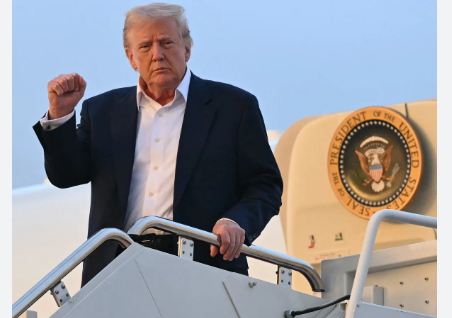U.S. President Donald Trump has embarked on a high-profile tour of the Far East, with stops including Malaysia, Japan, South Korea, and the Philippines, as part of a renewed push to strengthen America’s economic and security partnerships in the Indo-Pacific region. The visit marks Trump’s first extensive trip to Southeast Asia since leaving office and comes amid a shifting geopolitical environment defined by China’s growing influence, regional trade tensions, and evolving security alliances.
The tour began in Tokyo, where President Trump met with Japanese Prime Minister Fumio Kishida to discuss trade, defense cooperation, and maritime security in the East China Sea. Both leaders reaffirmed their commitment to maintaining a “free and open Indo-Pacific,” emphasizing the importance of upholding international law in territorial disputes. Trump praised Japan’s role as a “key U.S. ally” and expressed appreciation for its contributions to regional stability.
From Japan, Trump traveled to Seoul, where he held talks with South Korean President Yoon Suk-yeol. The discussions focused on the North Korean nuclear issue, joint defense exercises, and strengthening trilateral cooperation with Japan. Addressing a business forum in Seoul, Trump highlighted the potential for expanded U.S.-Korea trade, stating that “economic partnership and security cooperation go hand in hand.” He reiterated his belief that peace on the Korean Peninsula could only be achieved through “strength, deterrence, and diplomacy grounded in mutual respect.”
The centerpiece of Trump’s trip, however, is his visit to Malaysia, where he met with Prime Minister Anwar Ibrahim and key members of the Malaysian business community. In Kuala Lumpur, President Trump underscored the importance of enhancing trade and investment ties between the U.S. and ASEAN economies. He also emphasized the role of Malaysia as a strategic partner in maintaining freedom of navigation in the South China Sea.
Speaking at a joint press conference, Trump said, “The United States values its friendship with Malaysia and supports its role as a regional leader committed to peace and prosperity. Together, we can ensure that the Indo-Pacific remains open, secure, and free from coercion.”
The visit to the Philippines will conclude Trump’s regional tour, where discussions are expected to center on maritime security, counterterrorism, and the strengthening of defense cooperation. The U.S. has been keen to reassure allies in Southeast Asia of its continued presence and engagement amid China’s expanding military and economic footprint in the region.
Analysts see the trip as a move by Trump to reaffirm his global diplomatic credentials and rebuild international relationships that were strained during his presidency. The Far East tour also signals renewed U.S. interest in balancing China’s influence by deepening partnerships with regional democracies and emerging economies.
While the trip is largely symbolic, it reflects Washington’s ongoing recognition of the Indo-Pacific as the world’s most dynamic and strategically critical region—where economic growth, energy routes, and geopolitical rivalries intersect. President Trump’s engagements in Asia reaffirm that the United States remains a pivotal player in shaping the region’s future trajectory.
















